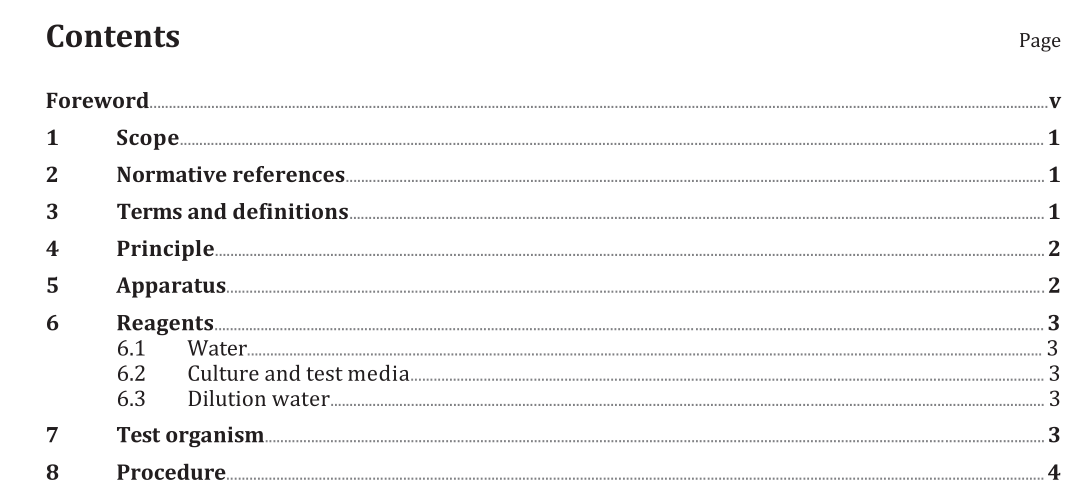BS ISO 16778:2015 pdf download.Water quality — Calanoid copepod early-life stage test with Acartia tonsa
1 Scope
This International Standard specifies an early-life stage test procedure for determination of the toxic effects of a chemical substance, effluent, or water sample on a cold-water marine and brackish water copepod species under semi-static conditions. The biological endpoints include survival and development of the early-life stages. The exposure starts with eggs and is continued until emergence of juvenile stages. Copepods occur widely in marine, brackish, and fresh water ecosystems. They represent important prey items for the larvae of many fish and larger invertebrates and are increasingly used as a live food source in aquaculture. They feed on phytoplankton and, thus, are an ecologically important energy-transfer link between primary producers and higher trophic levels.
2 Normative references
There are no normative references cited in this document.
3 Terms and definitions
For the purposes of this document, the following terms and definitions apply.
3.1 EC
effect concentration
3.2 EC x
calculated concentration from which an effect of x % is expected
3.3 larval development ratio
LDR
fraction of animals that have turned into a copepodite stage compared to the total number of surviving nauplii and copepodites within a given period of time (5 d to 6 d)
3.4 lowest observed effect concentration
LOEC
lowest concentration within the experimental range at which a significant effect is observed
4 Principle
The test is an early-life stage test, where the organisms are exposed to various concentrations of a chemical substance, effluent, or water sample, from the egg stage to the juvenile stages. Survival and development of early-life stages [larval development ratio (LDR)] are dependent on the investigated parameters. The total test duration is about 5 d to 6 d, which is sufficient time to investigate the development from nauplii to copepodites. The naupliar (larval) and copepodite (juvenile) stages are morphologically distinct, and therefore, the transition from the last naupliar to the first copepodite stage is easily observed. Larval development ratio (LDR) is recorded after 5 d to 6 d, when about 60 % of the control animals have reached a copepodite stage, and is expressed as the ratio of copepodites to the total number of surviving early-life stages (nauplii + copepodites) at the end of the LDR test. Hatching success and mortality of the early stages should be presented along with the LDR. The outcome of the test is either the no observed effect concentration and the lowest observed effect concentration (NOEC-LOEC) values or the effect concentrations with a certain degree (x %) of inhibition (EC x ) (e.g. EC 50 and EC 10 ).
BS ISO 16778:2015 pdf download
